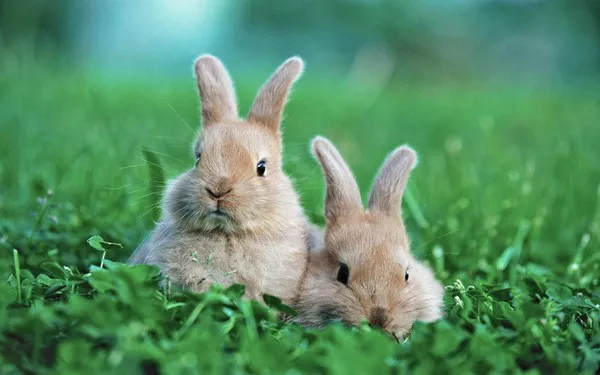Rabbits have specific natural behaviors when it comes to their elimination habits. In the wild, rabbits use their droppings to mark territory and communicate with other rabbits. This instinctual behavior can sometimes manifest in domestic rabbits as well, leading to the common issue of pooping in various locations around the home. Understanding these natural instincts is crucial for effectively training a rabbit to use a litter box.
The Role of Territory and Marking
Rabbits are territorial animals and may mark their space with droppings to establish dominance or communicate. This marking behavior can complicate the process of litter training, as rabbits may be more inclined to eliminate in certain areas they consider their territory. Recognizing and addressing these territorial tendencies can help in devising a successful training strategy.
Preparing for Litter Training
Choosing the Right Litter Box
Selecting the appropriate litter box is a foundational step in training a rabbit to use it consistently. The litter box should be spacious enough for the rabbit to comfortably enter, turn around, and sit. Boxes with high sides can help contain messes, but they should not be so high that the rabbit struggles to get in. Some owners find that a corner litter box or a shallow pan works well for their rabbits.
Selecting Safe and Comfortable Bedding
The type of bedding used in the litter box is crucial for both comfort and effectiveness. Avoid using clay-based or clumping cat litters, as these can be harmful if ingested. Instead, opt for paper-based or hay-based bedding that is safe for rabbits. Hay-based bedding also serves a dual purpose by providing the rabbit with a source of food while absorbing moisture and odors.
Establishing a Routine
Consistency is key when training a rabbit to use a litter box. Establishing a routine for feeding, playtime, and cleaning can help the rabbit understand when and where it is appropriate to eliminate. Regularly scheduled feeding times can also aid in predicting when the rabbit will need to use the litter box, making it easier to guide them towards it.
Training Techniques
Positive Reinforcement
Positive reinforcement is an effective training method for rabbits. Rewarding the rabbit with treats, praise, or affection when it uses the litter box correctly reinforces the desired behavior. Be sure to provide rewards immediately after the rabbit uses the box to help it make the connection between the action and the reward.
Creating a Designated Area
Designating a specific area of the rabbit’s living space as the “bathroom” can help in litter training. Place the litter box in this area and encourage the rabbit to use it by placing a few of its droppings inside the box. The familiar scent can attract the rabbit to the box, making it more likely to use it consistently.
Addressing Accidents
Accidents are a normal part of the training process. When a rabbit eliminates outside the litter box, it is important not to punish the animal. Instead, clean the area thoroughly to remove any scent markers that may encourage further elimination in that spot. Use an enzyme-based cleaner to effectively remove odors and prevent the rabbit from returning to the same area.
See Also: Can Rabbits Be 100% Potty Trained?
Advanced Training Strategies
Using Multiple Litter Boxes
For rabbits that are particularly challenging to train or have access to a large space, using multiple litter boxes can be beneficial. Place litter boxes in different areas of the living space to accommodate the rabbit’s natural elimination habits. This approach can help reduce accidents and provide the rabbit with convenient options for using the bathroom.
Gradual Transition to a Single Box
If the rabbit is successfully using multiple litter boxes, you can gradually reduce the number of boxes over time. Slowly move the remaining boxes closer together until only one box is left. This process helps the rabbit transition to using a single box while still providing it with options throughout the training phase.
Using a Consistent Cleaning Routine
Maintaining a clean litter box is essential for encouraging a rabbit to use it regularly. Clean the box daily by removing soiled bedding and replacing it with fresh litter. A consistent cleaning routine helps prevent odors and maintains a hygienic environment, which can promote the rabbit’s willingness to use the box.
Addressing Behavioral and Health Issues
Recognizing Medical Concerns
Sometimes, inappropriate elimination can be a sign of underlying medical issues, such as gastrointestinal problems or urinary tract infections. If a rabbit continues to have accidents despite consistent training efforts, a veterinary consultation is recommended to rule out any health concerns. Early diagnosis and treatment can address medical issues that may be affecting the rabbit’s elimination habits.
Managing Stress and Environmental Factors
Stress and environmental changes can impact a rabbit’s behavior, including its elimination habits. Ensure that the rabbit’s living environment is calm and stable, with minimal disruptions. Avoid making sudden changes to the rabbit’s habitat or routine, as these can contribute to stress-related accidents.
Addressing Bonding and Socialization
A rabbit’s social environment can influence its behavior and litter training success. Bonding with the rabbit through positive interactions and socialization can improve its overall behavior and responsiveness to training. Spend quality time with the rabbit and provide opportunities for mental stimulation and exercise to support its well-being.
The Importance of Patience and Persistence
Understanding the Training Timeline
Training a rabbit to use a litter box is a gradual process that requires patience and persistence. Some rabbits may take weeks or even months to consistently use the box. It is important to remain patient and continue reinforcing positive behaviors while addressing any challenges that arise.
Celebrating Small Successes
Celebrate and acknowledge the rabbit’s progress throughout the training process. Recognizing and rewarding small successes can boost the rabbit’s confidence and motivation. Positive reinforcement helps strengthen the bond between the rabbit and its owner, making the training experience more enjoyable for both parties.
Conclusion
Training a rabbit not to poop everywhere involves understanding its natural behavior, selecting the right equipment, and employing effective training techniques. By preparing adequately, using positive reinforcement, and addressing any behavioral or health issues, you can successfully guide your rabbit to use the litter box consistently. Patience and persistence are key to achieving lasting results, and with the right approach, you can create a clean and harmonious living environment for both you and your rabbit.
Related Topics:

























